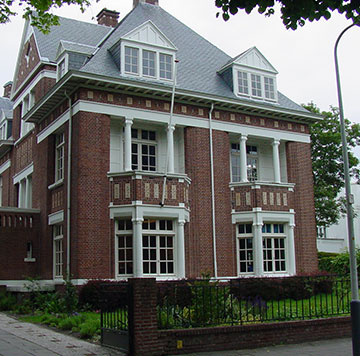RFTU-02 - Rapid fire session from selected oral abstracts
Assessing The Role Of Cardiomyocyte Senescence And Secreted Factors In Anthracycline-induced Cardiotoxicity
- By: BOOTH, Laura Katherine (United Kingdom)
- Co-author(s): Ms Laura Katherine Booth (Translational and Clinical Research Institute, Newcastle University, Newcastle Upon Tyne, United Kingdom)
Ms Ray Alsuhaibani (Translational and Clinical Research Institute, Newcastle University, Newcastle Upon Tyne, United Kingdom)
Dr Rachael Redgrave (Biosciences Institute, Newcastle University, Newcastle Upon Tyne, United Kingdom)
Dr Simon Tual-Chalot (Biosciences Institute, Newcastle University, Newcastle Upon Tyne, United Kingdom)
Dr Maria Camacho Encina (Biosciences Institute, Newcastle University, Newcastle Upon Tyne, United Kingdom)
Ms Yasemin Ekinci (Translational and Clinical Research Institute, Newcastle University, Newcastle Upon Tyne, United Kingdom)
Dr Omowumi Folaranmi (Biosciences Institute, Newcastle University, Newcastle Upon Tyne, United Kingdom)
Professor Ioakim Spyridopoulos (Translational and Clinical Research Institute, Newcastle University, Newcastle Upon Tyne, United Kingdom)
Dr Jason Gill (Translational and Clinical Research Institute, Newcastle University, Newcastle Upon Tyne, United Kingdom)
Dr Gavin Richardson (Biosciences Institute, Newcastle University, Newcastle Upon Tyne, United Kingdom) - Abstract:
Background:
The prescription of anthracycline chemotherapies (such as doxorubicin) is a mainstay intervention for oncologists treating many malignancies, but these drugs have well-established adverse drug reactions, including delayed-onset cardiotoxicity, which can culminate in heart failure (anthracycline-induced cardiotoxicity, AIC). Anthracyclines can induce cardiomyocytes to senescence principally through DNA damage, and while it is known that this process contributes to disease, the exact mechanisms are not well understood. One possibility is that senescent cardiomyocytes and their senescence-associated secretory phenotype (SASP) drive the subclinical, structural changes that precede measurable, functional changes in the heart: late-stage AIC is often characterised by a phenotype associated with senescence & cardiac ageing, e.g. fibrosis and maladaptive remodelling.
Purpose:
We hypothesised that senescent cardiomyocytes contribute to AIC via a pro-remodelling secretory phenotype. Accordingly, we aimed to establish in vitro models of doxorubicin-induced cardiomyocyte senescence, and assess the pro-remodelling cellular phenotype of these cardiomyocytes (e.g. expression of pro-remodelling cytokines).
Methods:
Human AC16 cardiomyocytes were exposed to 500 nM doxorubicin, for 3 hours (representing a transient, sublethal and clinically relevant dose) or exposed to vehicle control. Cardiomyocytes were allowed to recover for 10 days before analyses commenced. Markers of senescence were evaluated at the transcript level (via quantitative polymerase chain reaction, qPCR), and at the protein level (via immunocytochemistry, ICC), and heart failure-associated transcripts were also assessed. Parallel studies were conducted in human stem cell-derived cardiomyocytes (iPSC-CMs) to validate this model. Conditioned media was collected from senescent/non-senescent AC16 cardiomyocytes for 48 hours and applied to human cardiac fibroblasts (HCFs) for 10 days, whereupon phenotypic changes in HCFs were evaluated using qPCR and ICC. Secreted factors in the conditioned medium were explored using a cytokine array.
Results:
Senescence and heart failure transcripts were significantly upregulated in our two independent cellular models (AC16 cardiomyocytes and iPSC-CMs) at 10 days post-doxorubicin vs control (p21 3.2-fold, p16 1.3-fold, PURPL 8.9-fold, GDF15 18.9-fold). This data was validated at a protein level. Interestingly, senescent AC16 cardiomyocytes secreted a functional SASP capable of inducing myofibroblast activation, identified by increased expression of IL-8, periostin and αSMA-positive stress fibres in otherwise unstimulated primary HCFs. Cytokine array analysis of conditioned media collected from doxorubicin-induced senescent cardiomyocytes identified a cardiomyocyte SASP comprising several proteins involved in immune cell recruitment (MCP-1: 470 vs 2 pg/mL), inflammation (IL-6: 22 vs 0 pg/mL) and myocardial remodelling (FGF-2: 41 vs 7 pg/mL).
Conclusion:
We have established in vitro models for AIC, showing that sublethal doxorubicin exposure induces senescence in human cardiomyocytes. This is accompanied by expression of markers related to heart failure. Senescent cardiomyocytes release a pro-remodelling SASP which promotes phenotypic changes in HCFs. Overall, these findings indicate that senescent cardiomyocytes can induce remodelling in the myocardium, which is a driver of early-stage AIC. The functionality of the cardiomyocyte SASP, and especially its role in cell-cell crosstalk, remains underappreciated in AIC and will form the basis of further work. Our data suggests that pharmacologically targeting cardiomyocyte senescence may be a therapeutic strategy to prevent or slow AIC: a hypothesis we will pursue in future studies.

